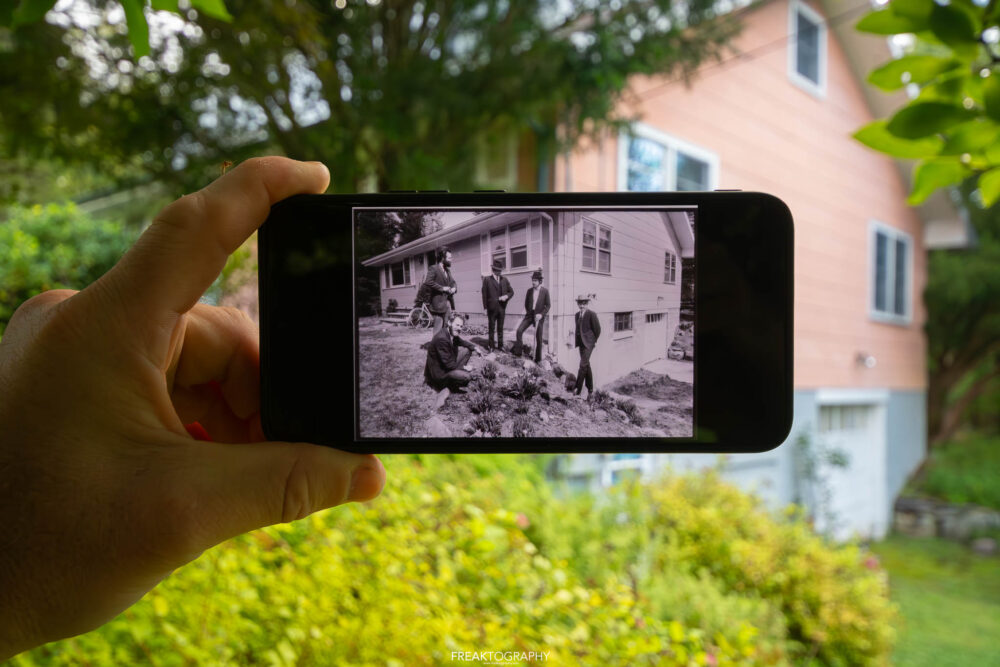About Big Pink in Saugerties New York
Big Pink, located in Saugerties, New York, holds significant historical importance in the world of music. It was the home where Bob Dylan and The Band gathered in the late 1960s to create and record music together.
The residence, situated at 56 Parnassus Lane, formerly known as 2188 Stoll Road, was originally constructed by Ottmar Gramms, who acquired the property in 1952.
In 1967, during the aftermath of Bob Dylan’s tour cancellation due to his motorcycle accident in 1966, Rick Danko, a member of Dylan’s backing band at the time, discovered the newly built house available for rent.
At that point, Dylan was residing in the nearby town of Woodstock.
In February 1967, Danko, along with fellow bandmates Garth Hudson and Richard Manuel, moved into this house, which soon gained local recognition as “Big Pink” due to its distinctive pink siding.
Here are some key points regarding the historical significance of Big Pink:
The Basement Tapes
Big Pink is most renowned for being the location where Bob Dylan and The Band recorded “The Basement Tapes.” These recordings, made in the basement of the house in 1967, included a large number of songs that are considered to be some of Dylan’s most significant work. The informal and collaborative nature of these sessions helped to shape the sound of American folk-rock and laid the groundwork for what would become the Americana music genre.
Influence on Music
The music created at Big Pink, especially “The Basement Tapes,” had a profound influence on the direction of popular music. It marked a shift away from the highly produced and electric sound of mid-1960s rock towards a more acoustic and roots-oriented approach. Many artists have cited these recordings as a source of inspiration for their own work.
Cultural Icon
Big Pink has become a cultural icon in the world of music. The name “Big Pink” is synonymous with this creative period and has been referenced in songs, literature, and documentaries. It represents a time when musicians came together in a relaxed and communal setting to create music that was deeply rooted in American traditions.
Music History Landmark
The house itself has been recognized as a significant landmark in music history. While it has changed hands several times over the years, it remains a place of pilgrimage for music enthusiasts who want to connect with the spirit of the music created there.
Big Pink in Saugerties, New York, holds historical significance as the place where Bob Dylan and The Band recorded “The Basement Tapes.” These recordings had a lasting impact on the direction of American music and contributed to the development of the Americana genre. The house has become a symbol of this creative period and a cultural icon in the world of music.
The Band
“The Band” was a legendary Canadian-American rock group that emerged in the late 1960s and played a pivotal role in shaping the landscape of contemporary music. Here’s a brief history of the band:
1. Formation:
The Band was initially formed as “The Hawks” in the late 1950s, backing rockabilly singer Ronnie Hawkins. In 1964, they left Hawkins and became known as “Levon and the Hawks,” with Levon Helm on drums and vocals, Robbie Robertson on guitar, Rick Danko on bass and vocals, Richard Manuel on piano and vocals, and Garth Hudson on keyboards and saxophone. They were known for their tight-knit musical chemistry and ability to blend various genres like rock, blues, country, and folk.
2. Bob Dylan’s backing band:
In 1965, Bob Dylan recruited the Hawks to serve as his backing band during his transition from acoustic folk to electric rock. They faced significant controversy and backlash from folk purists during their time with Dylan, but their collaboration helped pioneer the folk-rock and Americana genres. They played on Dylan’s groundbreaking albums “Bringing It All Back Home,” “Highway 61 Revisited,” and “Blonde on Blonde.”
3. Becoming “The Band”:
In 1968, after their time with Dylan, the group officially became “The Band” and released their debut album, “Music from Big Pink.” The album was a critical and commercial success and featured songs like “The Weight” and “Chest Fever.” Their unique blend of roots music and rock set them apart from the psychedelic and progressive rock of the era.
4. Further Albums and Success:
The Band followed up with more acclaimed albums like “The Band” (also known as the “Brown Album”) in 1969 and “Stage Fright” in 1970. These albums included classic songs such as “The Night They Drove Old Dixie Down,” “Up on Cripple Creek,” and “The Shape I’m In.”
5. The Last Waltz:
In 1976, The Band held a farewell concert called “The Last Waltz” at the Winterland Ballroom in San Francisco. It featured guest appearances by artists like Bob Dylan, Eric Clapton, Neil Young, and many others. The event was filmed by Martin Scorsese and turned into a documentary and a live album, becoming a landmark moment in rock history.
6. Post-Last Waltz Activities:
After “The Last Waltz,” The Band members pursued various solo projects and collaborations. Tragically, Richard Manuel died by suicide in 1986. The remaining members continued to perform and record with different musicians, occasionally reuniting for special events.
7. Legacy:
The Band’s influence on contemporary music is immeasurable. Their distinctive sound and timeless songs have inspired countless artists across genres. They are often regarded as one of the greatest and most influential rock groups in history.
The Band’s music continues to be celebrated, and their legacy endures as a testament to their unique musical craftsmanship and storytelling prowess.

